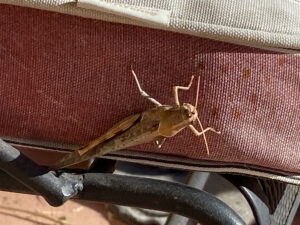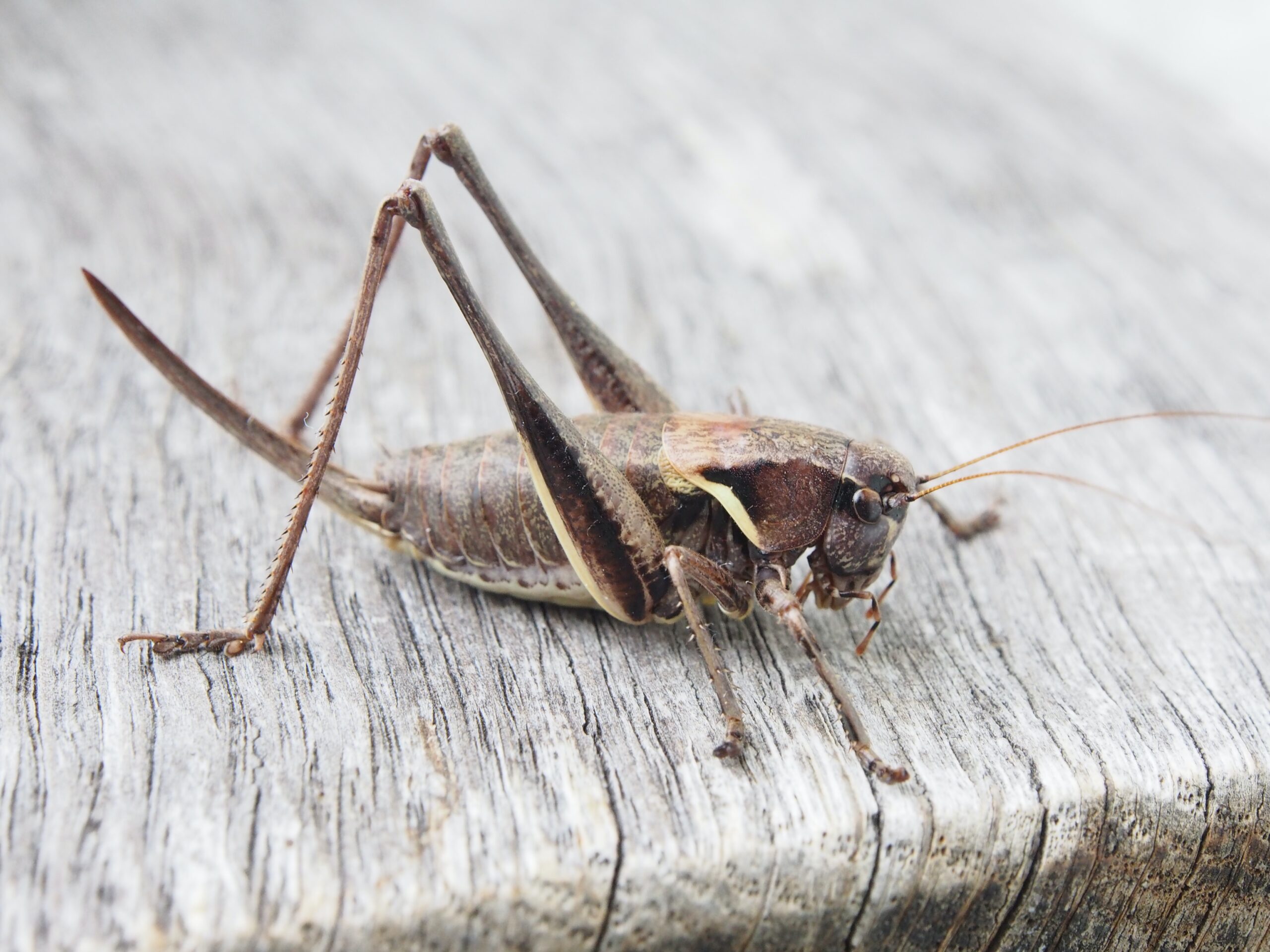I was outside recently and went to sit down in a cushioned chair as I often do, but this morning, I found the chair occupied! You’ll never guess who took it.

The surprisingly large insect, nearly 3 inches long, showed no interest in vacating the seat for me, so I thought we should get better acquainted. I know we have many grasshoppers or locusts in the Sonoran Desert, but I wasn’t certain which one this one was.
Getting Some Answers
I pulled out my iNaturalist app and snapped a photo. The answer came back as the species Schistocerca nitens – Gray Bird Grasshopper. Of course, I had to check with photos online and it does look like a gray bird grasshopper. I’m not familiar with gray bird grasshoppers, so had to do a bit of reading about them. I hope you don’t mind me sharing what I found. They are solitary insects and hang around the Sonoran Desert year-round.
Like many other Sonoran desert creatures. This grasshopper is colored in the tan colors of the desert environment. In addition to being camouflaged, they don’t move much, preventing detection by predators. Maybe this one thought I was a large mammalian predator and that is why they wouldn’t move.
Why is this insect named after a lower vertebrate, i.e. birds? They are strong fliers and can travel long distances, including over water. It’s a body style that has been consistently good. Their lineage goes back to the Triassic period, roughly 250 million years.
Gray birds are native to the southwest US and northern Mexico. I think of grasshoppers as being vegetarians, but gray birds eat insects along with seeds. Many of the insects they consume we consider pests. Awesome.
Around here, gray birds spend the winter as eggs in the ground. However, they hatch in two sessions. The first group hatches after the winter rains, maturing to adulthood around April and May. The larger second group emerges after the summer monsoon rains, becoming adults sometime around September. My visitor must have been in the first group.
I’m sure glad I took the time to get to know this individual. The lifespan of a gray bird grasshopper is usually only 4 months! Go ahead and use the chair, my insect friend. I’m glad you stopped by for a visit.
